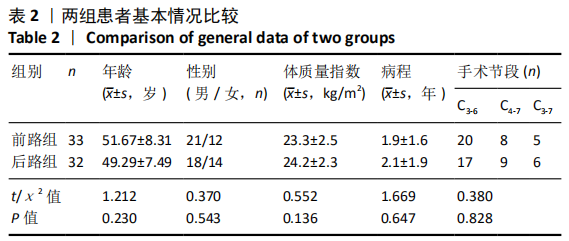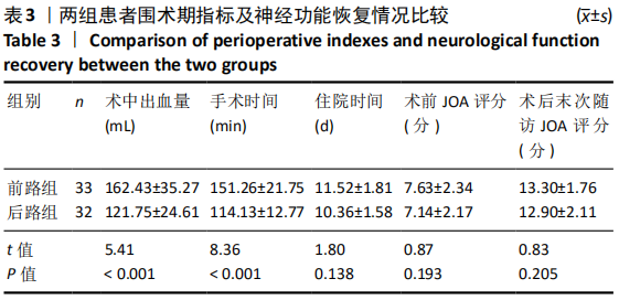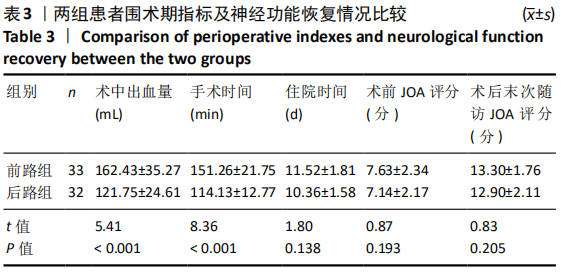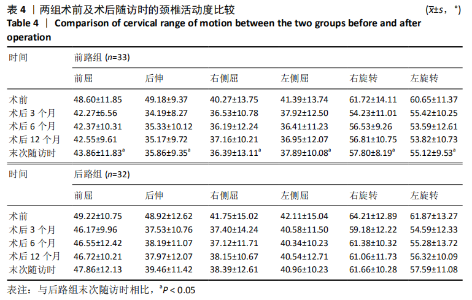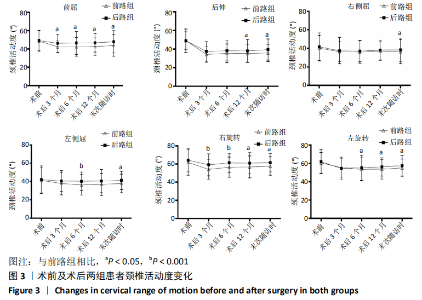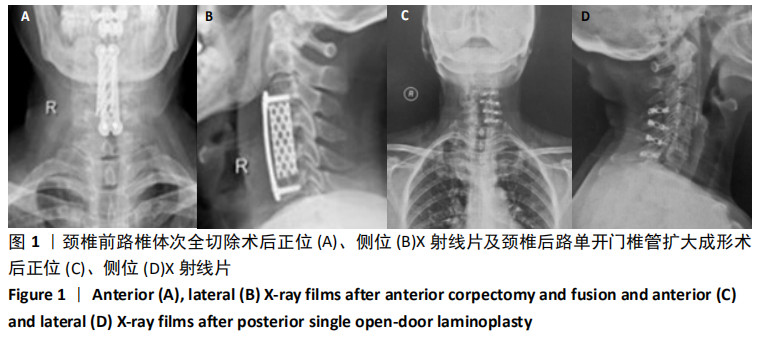| [1] |
Liu Zhengpeng, Wang Yahui, Zhang Yilong, Ming Ying, Sun Zhijie, Sun He.
Application of 3D printed interbody fusion cage for cervical spondylosis of spinal cord type: half-year follow-up of recovery of cervical curvature and intervertebral height
[J]. Chinese Journal of Tissue Engineering Research, 2021, 25(6): 849-853.
|
| [2] |
Luo Xuanxiang, Jing Li, Pan Bin, Feng Hu.
Effect of mecobalamine combined with mouse nerve growth factor on nerve function recovery after cervical spondylotic myelopathy surgery
[J]. Chinese Journal of Tissue Engineering Research, 2021, 25(5): 719-722.
|
| [3] |
Li Kun, Li Zhijun, Zhang Shaojie, Gao Shang, Sun Hao, Yang Xi, Wang Xing, Dai Lina .
A 4-year-old child model of occipito-atlanto-axial joints established by finite element dynamic simulation
[J]. Chinese Journal of Tissue Engineering Research, 2021, 25(24): 3773-3778.
|
| [4] |
Liu Jinyu, Ding Yiwei, Lu Zhengcao, Gao Tianjun, Cui Hongpeng, Li Wen, Du Wei, Ding Yu.
Finite element biomechanical study of full endoscopic fenestration decompression for cervical spondylotic myelopathy
[J]. Chinese Journal of Tissue Engineering Research, 2021, 25(24): 3850-3854.
|
| [5] |
Xu Hui, Kang Bingxin, Gao Chenxin, Zhao Chi, Xu Xirui, Sun Songtao, Xie Jun, Xiao Lianbo, Shi Qi.
Effectiveness of Tuina in the treatment of pain after total knee arthroplasty in patients with knee osteoarthritis
[J]. Chinese Journal of Tissue Engineering Research, 2021, 25(18): 2840-2845.
|
| [6] |
Xue Jingbo, Zhu Bin, Li Zepeng, Wang Cheng, Ouyang Zhihua, Yan Yiguo.
Biomechanical characteristics of a sleeve-type guided growth rod in a six-degree-of-freedom joint robot
[J]. Chinese Journal of Tissue Engineering Research, 2021, 25(15): 2297-2302.
|
| [7] |
Liu Kun, Xu Hao, Wang Yingzhen, Zhang Haining, Fang Yuan, Xiang Shuai, Lü Chengyu.
Direct repair of medial collateral ligament injury combined with brace in total knee arthroplasty
[J]. Chinese Journal of Tissue Engineering Research, 2021, 25(15): 2352-2357.
|
| [8] |
Liu Yu, Zhang Nanxin, Dai Liqun, Ying Wei.
Meta-analysis of the effectiveness of cold therapy after
total knee arthroplasty
[J]. Chinese Journal of Tissue Engineering Research, 2020, 24(9): 1443-1448.
|
| [9] |
Cheng Caitong, Han Pengfei, Wu Taiyong, Li Jian, Fu Haijun, Wang Yushan, Feng Yi.
Meta-analysis of radial head arthroplasty versus open reduction and internal
fixation for treating radial head fractures
[J]. Chinese Journal of Tissue Engineering Research, 2020, 24(9): 1457-1463.
|
| [10] |
Tan Biao, Zuo Biao, Huang Yong.
Evaluation of balance function of unicompartmental and total
knee arthroplasties for treating unicompartmental knee osteoarthritis
[J]. Chinese Journal of Tissue Engineering Research, 2020, 24(6): 827-832.
|
| [11] |
Wen Yangning, Han Xiaoqiang, Feng Chao, Sun Haibiao.
Meta-analysis of open reduction and internal fixation versus total elbow arthroplasty for distal humeral fracture in the
elderly
[J]. Chinese Journal of Tissue Engineering Research, 2020, 24(6): 968-975.
|
| [12] |
Shi Weifa, Guo Zhimin, Deng Huiyun, Shen Yanling, Shi Lingling, Wu Shilong, Huang Zebin.
Systematic evaluation of anterior cruciate ligament
reconstruction with peroneus longus tendon and hamstring tendon
[J]. Chinese Journal of Tissue Engineering Research, 2020, 24(5): 811-820.
|
| [13] |
Yue Ju’an, Zhang Qidong, Huang Cheng, Guo Wanshou, Wang Weiguo, Wang Randong.
Adding hormone in cocktail promotes rapid recovery after unicompartmental knee arthroplasty
[J]. Chinese Journal of Tissue Engineering Research, 2020, 24(27): 4343-4348.
|
| [14] |
Zhang Chenglong, Hu Chuan, Zhang Ming, Guo Xianglin, Sun Kang.
Application of elastic compression bandage after first total
knee arthroplasty
[J]. Chinese Journal of Tissue Engineering Research, 2020, 24(24): 3851-3856.
|
| [15] |
Liang Long, Yu Jie, Wei Xu, Zhou Shuaiqi, Yin Xunlu, Liu Guangwei, Xie Rui, Xie Rong, Zhuang Minghui, Zhu Liguo, Feng Minshan.
Establishment
and evaluation of a cadaveric model of chronic strain-induced upper
cervical spine instability based on fascia-bone theory
[J]. Chinese Journal of Tissue Engineering Research, 2020, 24(20): 3152-3156.
|



